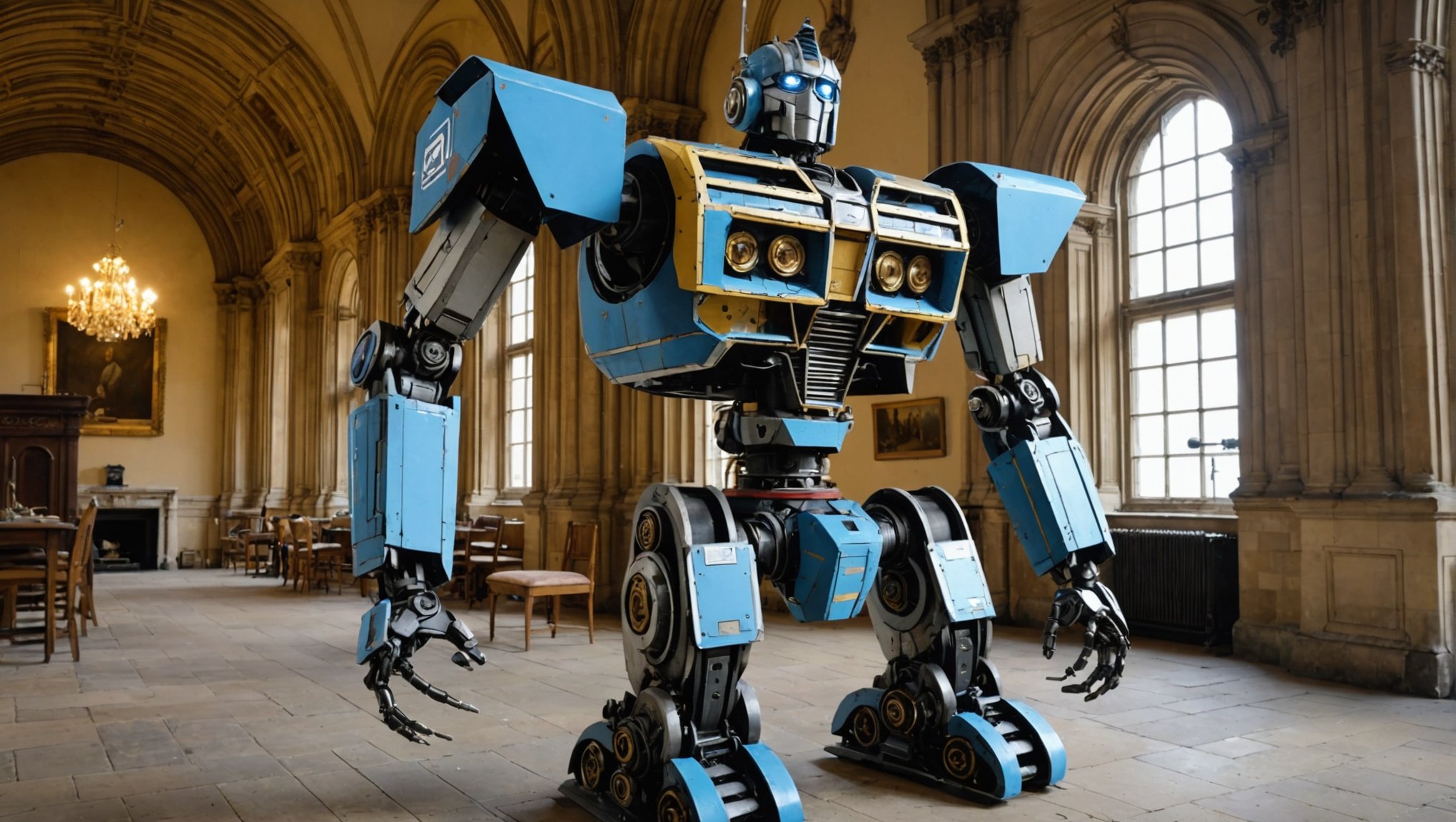Revolutionizing Heritage: How Advanced Robotics Can Transform the Restoration of Historic Buildings in the UK
The preservation of historic buildings is a daunting task that requires precision, care, and a deep respect for the cultural heritage they represent. In the UK, where historic sites are plentiful and deeply valued, the integration of advanced robotics is poised to revolutionize the restoration process. Here’s how this cutting-edge technology is transforming heritage preservation.
The Challenges of Heritage Preservation
Preserving historic buildings is a complex and multifaceted task. It involves meticulous restoration work, careful handling of fragile materials, and adherence to strict historical and architectural standards. Traditional methods often rely on manual labor, which can be time-consuming, costly, and sometimes risky for both the workers and the structures themselves.
Additional reading : How the ai checker ensures your content is truly original
- Time-consuming and labor-intensive processes
- High costs associated with manual restoration
- Risk of damage to the building or injury to workers
- Difficulty in maintaining historical accuracy
- Limited access to certain areas of the building
The Role of Advanced Robotics in Heritage Preservation
Advanced robotics, combined with technologies like artificial intelligence (AI), augmented reality (AR), and virtual reality (VR), is changing the landscape of heritage preservation. Here are some key ways in which robotics is making a significant impact:
Precision and Efficiency
Robots equipped with AI can perform tasks with a level of precision that is often beyond human capability. For example, robotic arms can be programmed to handle delicate tasks such as cleaning intricate stone carvings or repairing fragile glasswork. This precision not only ensures that the work is done accurately but also reduces the risk of damage to the building.
This might interest you : Unlocking security: the power of a smart password generator
- Robotic arms for delicate tasks like cleaning and repair
- AI-driven systems for precise material handling
- Automated tools for consistent and accurate work
Enhanced Safety
Robots can operate in environments that are hazardous to humans, such as areas with extreme temperatures, toxic chemicals, or hard-to-reach spaces. This makes them ideal for tasks like inspecting and repairing high ceilings, walls, or other inaccessible areas without putting human workers at risk.
- Operation in hazardous environments
- Inspection and repair of hard-to-reach areas
- Reduced risk of injury to workers
Sustainable Preservation
Advanced robotics can contribute significantly to sustainable preservation practices. For instance, robots can be used to optimize the use of materials, reduce waste, and enhance energy efficiency during the restoration process. This aligns with the broader goal of achieving net-zero emissions and promoting eco-friendly practices.
- Optimization of material use
- Reduction of waste
- Enhanced energy efficiency
- Promotion of eco-friendly practices
Case Studies: Real-World Applications
Several case studies illustrate the effective use of advanced robotics in heritage preservation.
The Restoration of Historic Facades
In a project to restore the facade of a historic building in London, robotic systems were used to clean and repair the stone work. The robots were equipped with AI algorithms that allowed them to identify areas needing repair and perform the necessary work with high precision. This not only saved time and money but also ensured that the historical integrity of the building was maintained.
**Project Details:**
- **Location:** London, UK
- **Task:** Cleaning and repairing stone facades
- **Technology Used:** AI-equipped robotic arms
- **Outcome:** Precise and efficient restoration, reduced risk to workers
The Use of Augmented Reality in Restoration
Augmented reality (AR) is being used to enhance the restoration process by providing real-time visual guidance to workers. For example, in the restoration of a medieval castle, AR was used to overlay historical designs and architectural plans onto the actual structure, helping workers to accurately replicate the original features.
**Project Details:**
- **Location:** Medieval castle, UK
- **Task:** Replicating original architectural features
- **Technology Used:** Augmented reality
- **Outcome:** Improved accuracy, enhanced historical authenticity
Government and Private Sector Collaboration
The integration of advanced robotics in heritage preservation is often a collaborative effort between government agencies, private sector companies, and research institutions.
Government Initiatives
Government initiatives play a crucial role in funding and supporting R&D in robotics and heritage preservation. For instance, the UK government has launched several programs aimed at promoting the use of technology in preserving cultural heritage.
**Government Programs:**
- **Funding for R&D projects**
- **Tax incentives for private sector involvement**
- **Regulatory support for innovative technologies**
Private Sector Involvement
Private companies are also at the forefront of developing and implementing advanced robotics in heritage preservation. Companies like Yamaha Robotics SMT are providing cutting-edge solutions that combine AI, robotics, and other technologies to enhance manufacturing and restoration processes[3].
**Private Sector Contributions:**
- **Development of advanced robotic systems**
- **Provision of technical expertise and support**
- **Investment in R&D for new technologies**
Future of Heritage Preservation
The future of heritage preservation looks promising with the continued advancement of robotics and related technologies.
Predictive Maintenance and Monitoring
Advanced AI algorithms can predict when maintenance is needed, reducing the likelihood of sudden failures and ensuring that historic buildings remain in good condition. This predictive maintenance can be combined with real-time monitoring systems to provide continuous feedback on the building’s condition.
**Predictive Maintenance:**
- **AI-driven predictive analytics**
- **Real-time monitoring systems**
- **Early detection of potential issues**
Virtual and Augmented Reality in Restoration
Virtual reality (VR) and augmented reality (AR) will play increasingly important roles in the restoration process. These technologies can help in the detailed planning and execution of restoration projects, ensuring that the work is done accurately and efficiently.
**VR and AR Applications:**
- **Detailed planning and visualization**
- **Real-time guidance for workers**
- **Enhanced historical accuracy**
Practical Insights and Actionable Advice
For those involved in heritage preservation, here are some practical insights and actionable advice:
Embrace New Technologies
- Stay updated on the latest advancements in robotics and AI.
- Consider the potential benefits of integrating new technologies into your restoration projects.
Collaborate with Experts
- Work with experts from the robotics and AI fields to understand how these technologies can be applied to your specific needs.
- Collaborate with government agencies and private sector companies to access funding, expertise, and resources.
Focus on Sustainability
- Ensure that your restoration projects are sustainable and eco-friendly.
- Use robots and AI to optimize material use, reduce waste, and enhance energy efficiency.
The integration of advanced robotics in heritage preservation is a game-changer for the UK and beyond. By leveraging technologies like AI, AR, and VR, we can ensure that our cultural heritage is preserved with precision, efficiency, and sustainability. As we look to the future, it is clear that these innovations will continue to play a vital role in protecting and restoring our historic buildings.
**Key Takeaways:**
- **Advanced robotics enhances precision and efficiency in restoration.**
- **AI and related technologies improve safety and sustainability.**
- **Government and private sector collaboration is crucial for success.**
- **The future of heritage preservation is heavily reliant on technological innovation.**











